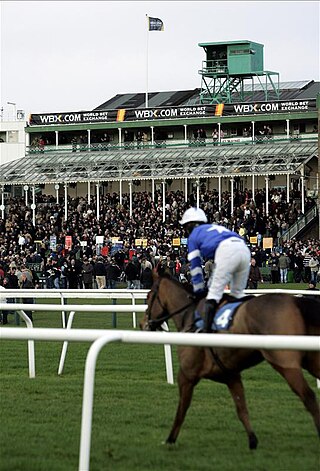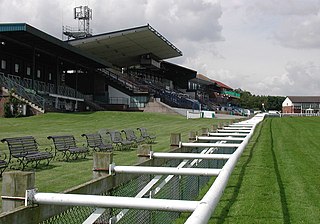
Horse racing is the second largest spectator sport in Great Britain, and one of the longest established, with a history dating back many centuries. According to a report by the British Horseracing Authority it generates £3.39 billion total direct and indirect expenditure in the British economy, of which £1.05 Billion is from core racing industry expenditure and the major horse racing events such as Royal Ascot and Cheltenham Festival are important dates in the British and international sporting and society calendar.

The Jockey Club is the largest commercial horse racing organisation in the United Kingdom. It owns 15 of Britain's famous racecourses, including Aintree, Cheltenham, Epsom Downs and both the Rowley Mile and July Course in Newmarket, amongst other horse racing assets such as the National Stud, and the property and land management company, Jockey Club Estates. The registered charity Racing Welfare is also a company limited by guarantee with the Jockey Club being the sole member. As it is governed by Royal Charter, all profits it makes are reinvested back into the sport.
In horse racing in the United Kingdom, France and Republic of Ireland, National Hunt racing requires horses to jump fences and ditches. National Hunt racing in the UK is informally known as "jumps" and is divided into two major distinct branches: hurdles and steeplechases. Alongside these there are "bumpers", which are National Hunt flat races. In a hurdles race, the horses jump over obstacles called hurdles; in a steeplechase the horses jump over a variety of obstacles that can include plain fences, water jump or an open ditch. In the UK, the biggest National Hunt events of the year are generally considered to be the Grand National and the Cheltenham Gold Cup.

Newmarket Racecourse is a British Thoroughbred horse racing venue in Newmarket, Suffolk, comprising two individual racecourses: the Rowley Mile and the July Course. Newmarket is often referred to as the headquarters of British horseracing and is home to the largest cluster of training yards in the country and many key horse racing organisations, including Tattersalls, the National Horseracing Museum and the National Stud. Newmarket hosts two of the country's five Classic Races – the 1,000 Guineas and 2,000 Guineas, and numerous other Group races. In total, it hosts 9 of British racing's 36 annual Group 1 races.

Newcastle Racecourse is a horse racing course located at Gosforth Park in Newcastle upon Tyne, England, owned by Arena Racing Company. It stages both flat and National Hunt racing, with its biggest meeting being the Northumberland Plate held annually in June.

Ayr Racecourse at Whitletts Road, Ayr, Scotland, was opened in 1907. There are courses for flat and for National Hunt racing.

Beverley Racecourse is a thoroughbred horse racing venue located in the town of Beverley in the East Riding of Yorkshire, England.
Musselburgh Racecourse is a horse racing venue located in the Millhill area of Musselburgh, East Lothian, Scotland, UK, close to the River Esk. It is the second biggest racecourse in Scotland and is the fourteenth biggest in the UK. In 2016, Musselburgh staged 28 fixtures. It was officially known as "Edinburgh Racecourse", and referred to as such in the English press, until the beginning of 1996 but was widely referred to as "Musselburgh" in Scotland long before that and was widely referred to as Musselburgh in the racing pages of Scottish newspapers.

Nottingham Racecourse is a thoroughbred horse racing venue located in Nottingham, Nottinghamshire, England. It is situated at Colwick Park, close to the River Trent and about 3 km east of the city centre.
April the Fifth (1929–1954) was a British Thoroughbred racehorse and sire. In a career that lasted from September 1931 until September 1932 he ran nine times and won three races. He failed to win or be placed in his first five races, but then showed sudden improvement in the spring of 1932, winning his next three races including The Derby. His subsequent career was adversely affected by injury and after one more unsuccessful race he was retired to stud, where he had little impact as a sire of winners.
The Lanark Silver Bell is a horseracing trophy from Lanark, Scotland. It is understood to be one of the oldest sporting trophies in the world.
Rockavon was a British Thoroughbred racehorse and sire, best known for winning the classic 2000 Guineas in 1961. After winning three races on minor tracks as a two-year-old and being well-beaten on his three-year-old debut Rockavon created a 66/1 upset when winning the 2000 Guineas, becoming the first horse trained in Scotland to win a classic. He subsequently only won one minor race and has been regarded as one of the least distinguished classic winners. At the end of 1961 he was retired to stud where he made no impact as a sire of winners.
Pall Mall (1955–1978) was an Irish-bred, British-trained Thoroughbred racehorse and sire, best known for winning the classic 2000 Guineas in 1958. Owned and bred by Queen Elizabeth II, Pall Mall was one of the leading British two-year-olds of 1957, when he won the New Stakes at Royal Ascot and was placed in three other important races. In the following spring, he performed moderately in two trial races before creating a 20/1 upset by winning the 2000 Guineas. He later won the first two runnings of the Lockinge Stakes before being retired to stud, where he had some success as a sire of winners.

Lanark Racecourse was a Scottish horse racing venue, situated in the small town of Lanark in Scotland's Central Belt, 25 miles (40 km) from Glasgow. It was reputedly founded by King William the Lion of Scotland (1165-1214).
Aurelius was an Irish Thoroughbred racehorse and sire best known for winning the classic St Leger Stakes in 1961 and for becoming one of the few classic winners to compete in steeplechases. As a two-year-old he finished fourth in his only appearance but was one of the best colts in Britain in the following year, winning the Craven Stakes and the King Edward VII Stakes before taking the St Leger. He was even better in 1962 when he won the Hardwicke Stakes and was narrowly beaten in the King George VI and Queen Elizabeth Stakes. He was retired to stud but had serious fertility problems and later returned to the racecourse where he had a reasonably successful career in National Hunt racing.
Petition (1944–1964) was a British Thoroughbred racehorse and sire. He was officially rated the second-best two-year-old in Britain in 1946 when he won the New Stakes, Richmond Stakes, Gimcrack Stakes and Champagne Stakes. He won on his debut in 1947 but sustained an injury when finishing unplaced in the 2000 Guineas and failed to win in two subsequent races that year. In 1948 he returned to his best form to beat a strong field in the Eclipse Stakes. He was retired to stud where he became a successful and influential breeding stallion.

Leith Races were the most important horse racing event in Scotland in the eighteenth century. They took place on the sands to the east of the harbour at Leith, near Edinburgh from 1504 to 1816. They first gained popularity through the patronage of the Duke of Albany, the future James VII and II, while he was Royal Commissioner at the Palace of Holyrood. Their exact date of origin had been lost by the mid-19th century but there is reference in the accounts of James IV's personal expenditure to a payment made in 1504 to a jockey, "the boy that ran the King’s horse", at Leith. There is also reference to them in the memoirs of the Earl of Huntly in 1591. From the Restoration until 1816, the races took place annually with very little intermission.
Commotion was a British Thoroughbred racehorse and broodmare who raced during World War II and was best known for winning the classic Oaks Stakes in 1941. After racing over sprint distances, she was stepped up in distance the substitute "New Oaks" over one and a half miles at Newmarket Racecourse. On her next appearance she won the Falmouth Stakes and was then retired from racing. She later became a very successful broodmare.
The Arran Scottish Fillies' Sprint Stakes is a Listed flat horse race in Great Britain open to mares and fillies aged three years or older. It is run at Ayr over a distance of 5 furlongs and 110 yards (1,106 metres), and it is scheduled to take place each year in September. It is currently held on the second day of Ayr's three-day Ayr Gold Cup Festival.











